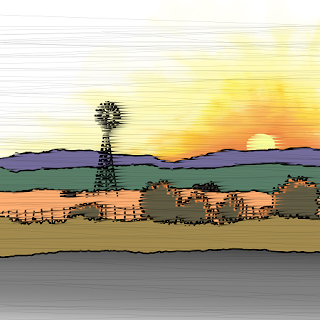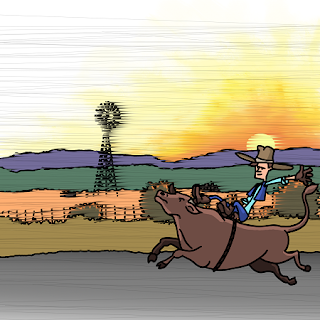Intro
A couple of years ago I blogged about drawing a crowd of santas at a party. I'd included a link to Tom Richmond's article about drawing a crowd scene, but the two scenes weren't very alike. |
| Latest Funstreak showing crowd in the background |
My latest Funstreak cartoon uses many of the techniques discussed in Tom's tutorial, but in a simplified way. This doesn't mean you don't need to put much thought into it. It's well worth considering the dynamics of a crowd as you draw.
Stepping Through the Process
A crowd of people might just be a bunch of ovals to represent faces, but there's a number of things to do in order to make it look convincing:-1. First we need to consider the density within the packing. People stand shoulder to shoulder, or with slight overlap, which leaves some gap between their heads.
 |
| Spacing Between Heads |
2. The people behind will position themselves between the heads of those in front to get the best view. This gives a loose hexagonal packing pattern when viewed from above, or if the crowd is on a banked surface.
 |
| Loose Hexagonal Packing |
3. People are also different heights and sizes, and tend to bunch in an irregular way, so we need to randomise the pattern a little. (I've also reduced the overlap heights.)
 |
| Randomising Positions |
4. Faces at the top of the crowd block will appear smaller than those at the bottom. This establishes distance. Try to keep the size change a linear progression, so work on no more than two rows at a time to help keep consistency.
 |
| Using Reduction - Each Row Back is 90% Size |
4. The usual distance effects will apply, so details will diminish and colours may darken or desaturate. In my example I didn't add any details because they're too far away, but I did add a little cell shading.
 |
| The Example From My Cartoon |



















